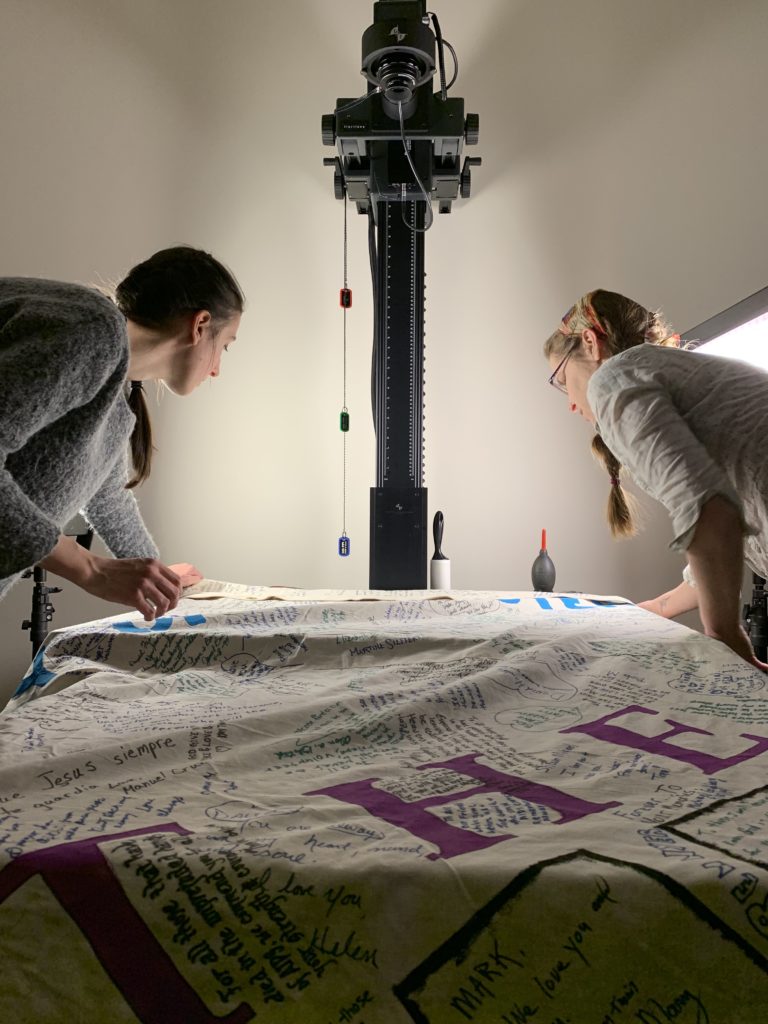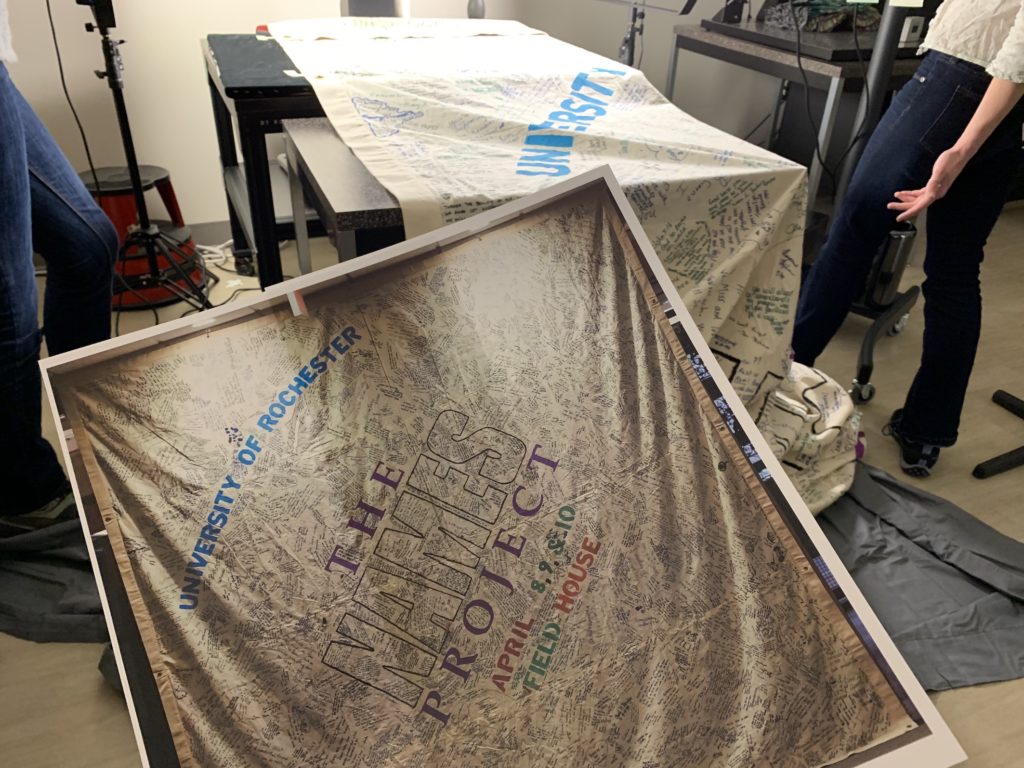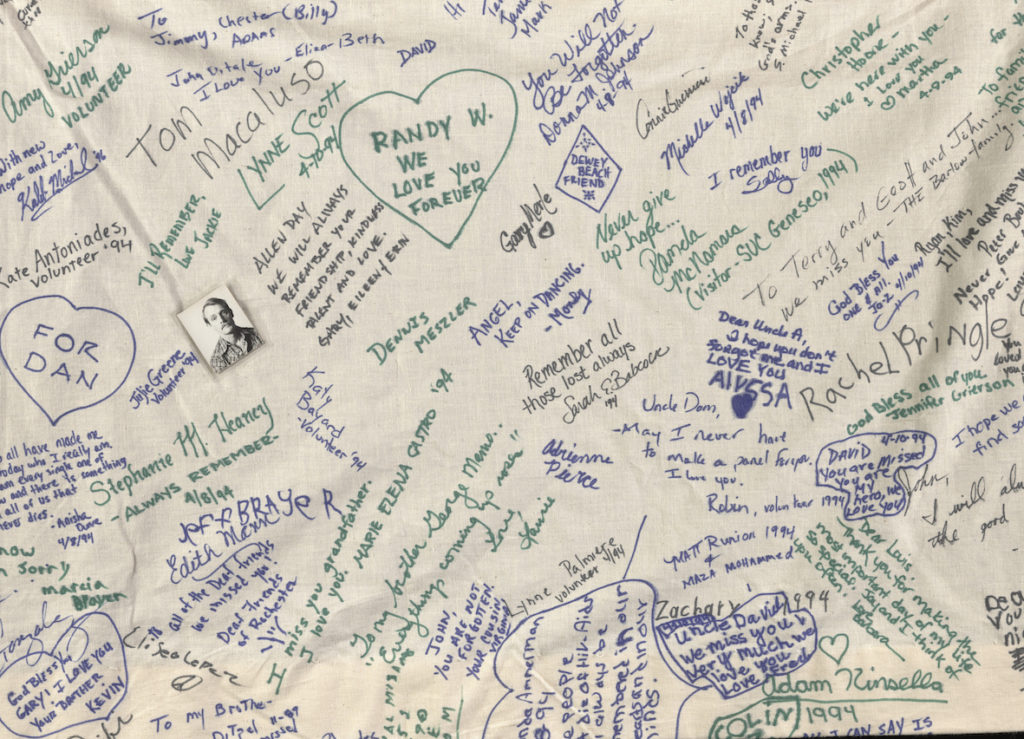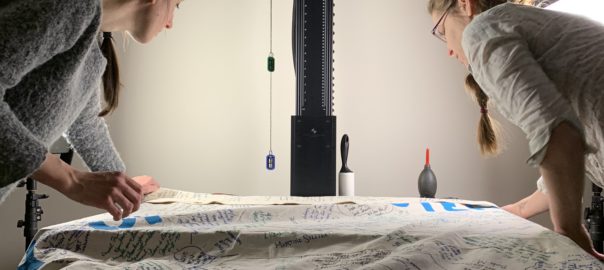
At the occasion of the anniversary of the Stonewall riots, Rare Books, Special Collections and Preservation collaborated with the Digital Scholarship Lab to create a new digital reproduction of the University of Rochester’s NAMES Project’s AIDS Memorial Quilt. The 12’x12′ panel includes notes, tributes, and signatures collected in April 1994, when the national AIDS quilt was on display at University of Rochester’s Goergen Athletic Center.
Beyond the historical significance of the project, we were excited to be involved with digitizing the 12’x12′ banner because it presented a variety of challenges that we don’t encounter on a regular basis in the Digitization Lab.
Challenge 1 : Size
Our goal was to create a 400dpi image of the quilt, in order to have a high quality image that would allow users to zoom in and read the quilt’s inscriptions.
To photograph at 400dpi, the max size area covered on the copy stand by our Phase One Camera Lens is 21.5” X 28.5”. Therefore, the only way to photograph a 12′ X 12′ object was to photograph it section by section. RBSCP would then use the individual images for an upcoming online exhibition, focusing on parts of the quilt only. We also offered to try to stitch the quilt back together digitally using photoshop.

If you do the math, we needed a minimum of 33 photos to cover the whole quilt. However, since our goal was also to stitch the images back together, we needed each image to overlap the last at least 1/3 to ensure successful stitching. We ended up generating almost 200 images by slowly advancing the quilt under the camera.

Challenge 2 : Material
Many of the objects that we routinely image at the Digitization Lab are extremely fragile and require particular care when handling. The AIDS quilt is made of sturdy fabric that has been written on with marker and fabric paint. Although we were not too worried about damaging the fabric as it is soft and pliable, and therefore easy to manipulate under the camera, we had to pay particular attention to sections where the paint was starting to crack and peel, and to ephemeral objects attached to the quilt (two ribbons and one photograph).
Finally, because of its sheer size, it was particularly challenging to not lose our place in the quilt and miss sections as we moved it along. Due to the materials characteristics of the fabric, we purposefully ended up with more pictures than needed to be sure we had through coverage. We wanted to have multiple images of sections in the event that we needed to swap one image for another that may have been less wrinkled or positioned better.

Challenge 3 : Editing and Generating the Digital Image
Imaging the object itself is not necessarily the most time consuming part of our work at the Digitization lab. More often than not, object preparation before and after imaging, editing and quality control require more attention and time. For example, photographing the quilt took Lisa and I approximately 10 hours. However, we are still working on editing and haven’t started stitching the quilt back together yet, which might be the most challenging aspect of this project.
It is particularly challenging to edit this job due to many factors; not only do we have to make sure we covered the entire quilt, but we also have to double check that we have enough overlap between every image. To that end, we printed a photograph of the quilt and carefully annotated it, marking each area covered by the Phase One Camera, image after image.

We selected images for RBSCP’s online exhibition project and are now ready to start stitching the quilt back together. Since we won’t be able to process all images at once, we will be stitching it by sections, and then stitch the bigger sections together. We will be using a script created by Digital Transitions Cultural Heritage for Photoshop’s photomerge function in order to automate batch stitching the sections. Our concern is that the quilt not being a flat object, Photoshop might have a hard time handling the creases in the fabric and not recognize where to stitch — more on that process soon!
